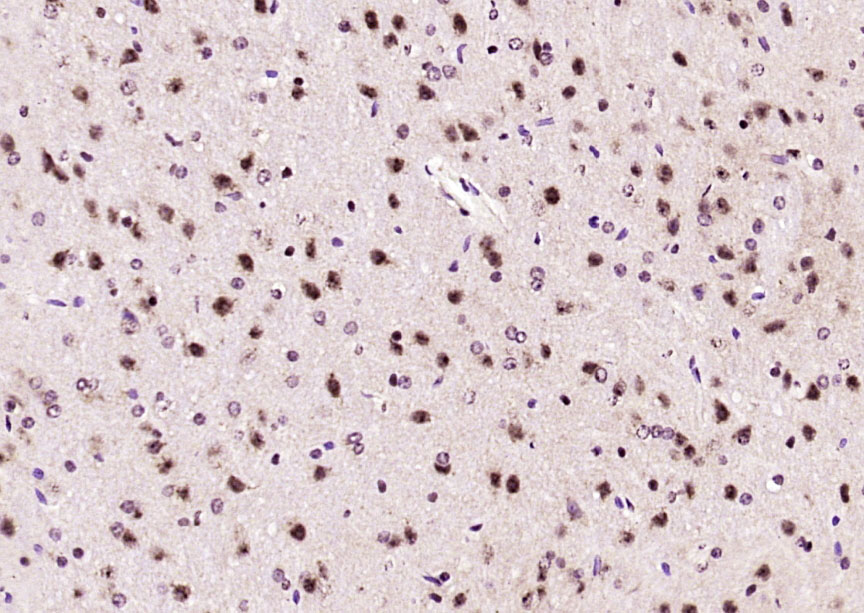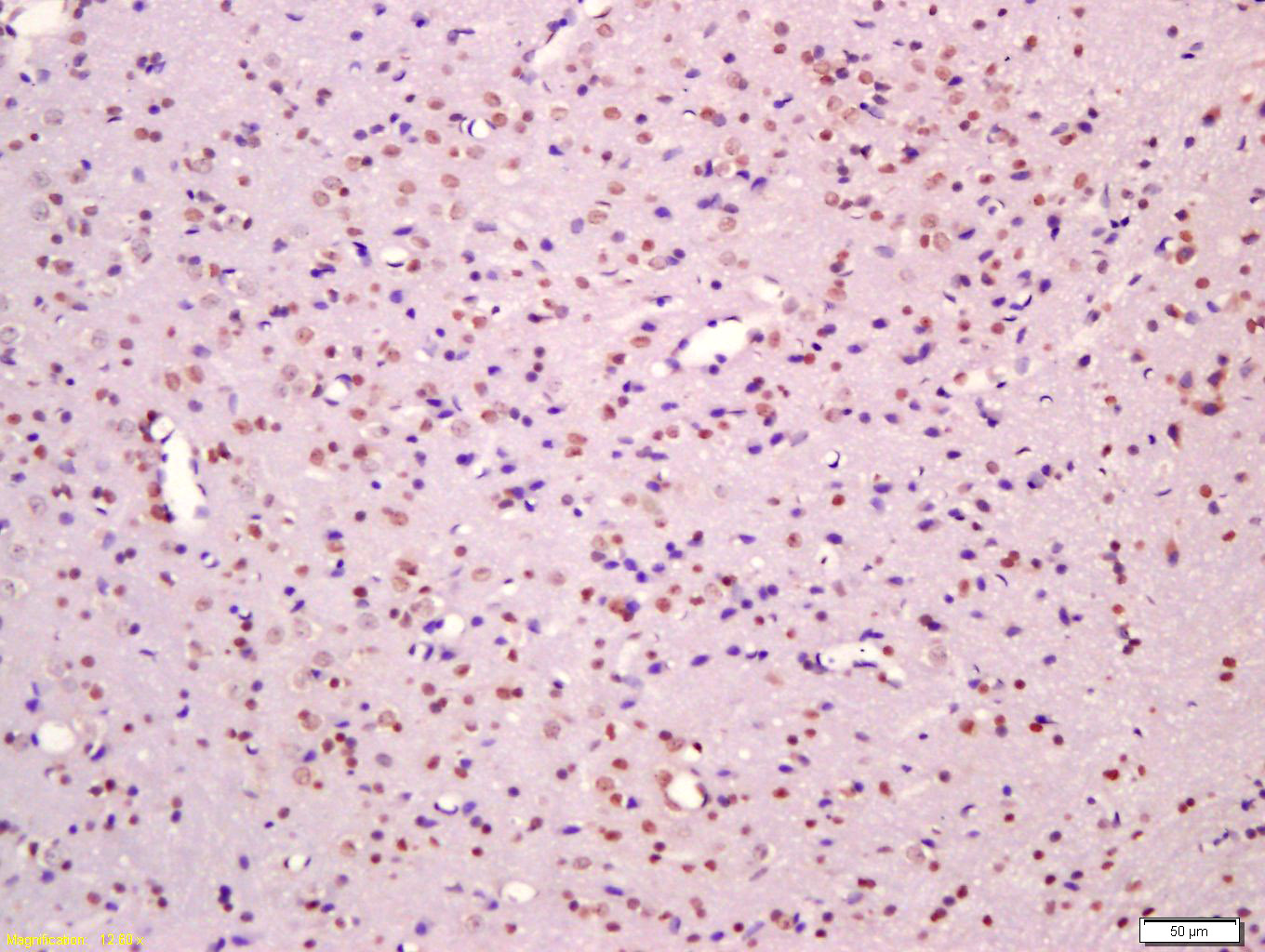
Rabbit Anti-Phospho-MAPKAPK2 (Thr334)antibody
MAPKAPK2 (Phospho Thr334); MAPKAPK2 (Phospho T334); MAPKAP Kinase 2 (phospho T334); p-MAPKAP Kinase 2 (phospho T334); MAPKAPK-2(Phospho-Thr334); MAPKAPK2(phospho T334); MAP Kinase Activated Protein Kinase 2; MAPK activated protein kinase 2; MAPKAP kinase
View History [Clear]
Details
Product Name Phospho-MAPKAPK2 (Thr334) Chinese Name 磷酸化丝裂原活化蛋白激酶活化的蛋白激酶2抗体 Alias MAPKAPK2 (Phospho Thr334); MAPKAPK2 (Phospho T334); MAPKAP Kinase 2 (phospho T334); p-MAPKAP Kinase 2 (phospho T334); MAPKAPK-2(Phospho-Thr334); MAPKAPK2(phospho T334); MAP Kinase Activated Protein Kinase 2; MAPK activated protein kinase 2; MAPKAP kinase 2; MAPKAPK 2; MAPKAPK2; MAPK2_HUMAN; Mitogen Activated Protein Kinase Activated Protein Kinase 2; MK 2; MK2; MAPKAPK-2. Product Type Phosphorylated anti Research Area Tumour immunology Signal transduction Apoptosis transcriptional regulatory factor Kinases and Phosphatases Immunogen Species Rabbit Clonality Polyclonal React Species Mouse, Rat, (predicted: Human, Chicken, Pig, Cow, ) Applications IHC-P=1:100-500 IHC-F=1:100-500 IF=1:100-500 (Paraffin sections need antigen repair)
not yet tested in other applications.
optimal dilutions/concentrations should be determined by the end user.Theoretical molecular weight 46kDa Cellular localization The nucleus cytoplasmic Form Liquid Concentration 1mg/ml immunogen KLH conjugated Synthesised phosphopeptide derived from human MAPKAPK2 around the phosphorylation site of Thr334: PQ(p-T)PL Lsotype IgG Purification affinity purified by Protein A Buffer Solution 0.01M TBS(pH7.4) with 1% BSA, 0.03% Proclin300 and 50% Glycerol. Storage Shipped at 4℃. Store at -20 °C for one year. Avoid repeated freeze/thaw cycles. Attention This product as supplied is intended for research use only, not for use in human, therapeutic or diagnostic applications. PubMed PubMed Product Detail MAP kinase activated protein kinase 2 (MAPKAP Kinase 2), also known as p45 hsp27 kinase, is a 45-54 kDa serine/threonine protein kinase that contains a proline rich sequence and two putative SH3 binding sites. MAPKAP Kinase 2 is activated in response to stress, IL1 and TNF, possibly catalyzed by p38/Hog dependent phosphorylation. One of the major substrates of MAPKAP Kinase 2 is hsp27, which stimulates actin polymerization in order to facilitate recovery from destruction of cytoskeleton during cellular stresses. MAPKAP2 is implicated in several disorders including ischemic brain injury and heart failure and has been shown to be important in regulating stress resistance and the production of TNF alpha.
Function:
Stress-activated serine/threonine-protein kinase involved in cytokines production, endocytosis, reorganization of the cytoskeleton, cell migration, cell cycle control, chromatin remodeling, DNA damage response and transcriptional regulation. Following stress, it is phosphorylated and activated by MAP kinase p38-alpha/MAPK14, leading to phosphorylation of substrates. Phosphorylates serine in the peptide sequence, Hyd-X-R-X(2)-S, where Hyd is a large hydrophobic residue. Phosphorylates ALOX5, CDC25B, CDC25C, ELAVL1, HNRNPA0, HSF1, HSP27/HSPB1, KRT18, KRT20, LIMK1, LSP1, PABPC1, PARN, PDE4A, RCSD1, RPS6KA3, TAB3 and TTP/ZFP36. Mediates phosphorylation of HSP27/HSPB1 in response to stress, leading to dissociate HSP27/HSPB1 from large small heat-shock protein (sHsps) oligomers and impair their chaperone activities and ability to protect against oxidative stress effectively. Involved in inflammatory response by regulating tumor necrosis factor (TNF) and IL6 production post-transcriptionally: acts by phosphorylating AU-rich elements (AREs)-binding proteins ELAVL1, HNRNPA0, PABPC1 and TTP/ZFP36, leading to regulate the stability and translation of TNF and IL6 mRNAs. Phosphorylation of TTP/ZFP36, a major post-transcriptional regulator of TNF, promotes its binding to 14-3-3 proteins and reduces its ARE mRNA affinity leading to inhibition of dependent degradation of ARE-containing transcript. Also involved in late G2/M checkpoint following DNA damage through a process of post-transcriptional mRNA stabilization: following DNA damage, relocalizes from nucleus to cytoplasm and phosphorylates HNRNPA0 and PARN, leading to stabilize GADD45A mRNA. Involved in toll-like receptor signaling pathway (TLR) in dendritic cells: required for acute TLR-induced macropinocytosis by phosphorylating and activating RPS6KA3.
Subunit:
Heterodimer with p38-alpha/MAPK14. The heterodimer with p38-alpha/MAPK14 forms a stable complex: molecules are positioned 'face to face' so that the ATP-binding sites of both kinases are at the heterodimer interface. Interacts with PHC2.
Subcellular Location:
Cytoplasm. Nucleus. Note=Phosphorylation and subsequent activation releases the autoinhibitory helix, resulting in the export from the nucleus into the cytoplasm.
Tissue Specificity:
Expressed in all tissues examined.
Post-translational modifications:
Sumoylation inhibits the protein kinase activity.
Phosphorylated and activated by MAP kinase p38-alpha/MAPK14 at Thr-222, Ser-272 and Thr-334.
Similarity:
Belongs to the protein kinase superfamily. CAMK Ser/Thr protein kinase family.
Contains 1 protein kinase domain.
SWISS:
P49137
Gene ID:
9261
Database links:Entrez Gene: 9261 Human
Entrez Gene: 17164 Mouse
Omim: 602006 Human
SwissProt: P49137 Human
SwissProt: P49138 Mouse
Unigene: 643566 Human
Unigene: 713747 Human
Unigene: 221235 Mouse
Unigene: 6276 Rat
Product Picture
Antigen retrieval: citrate buffer ( 0.01M, pH 6.0 ), Boiling bathing for 15min; Block endogenous peroxidase by 3% Hydrogen peroxide for 30min; Blocking buffer (normal goat serum,C-0005) at 37℃ for 20 min;
Incubation: Anti-Phospho-MAPKAPK2(Thr334) Polyclonal Antibody, Unconjugated(SL3262R) 1:200, overnight at 4°C, followed by conjugation to the secondary antibody(SP-0023) and DAB(C-0010) staining
Bought notes(bought amounts latest0)
No one bought this product
User Comment(Total0User Comment Num)
- No comment




 +86 571 56623320
+86 571 56623320
 +86 18668110335
+86 18668110335

